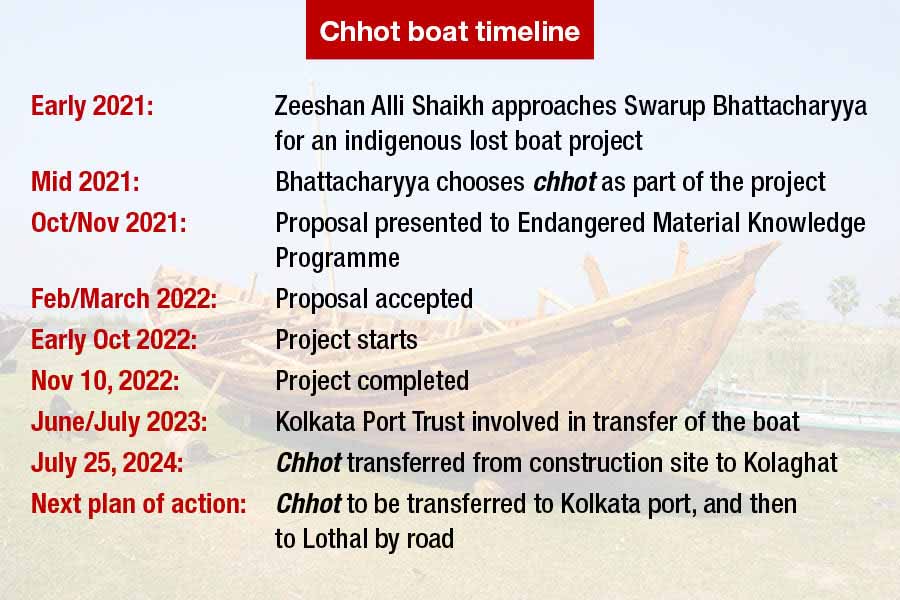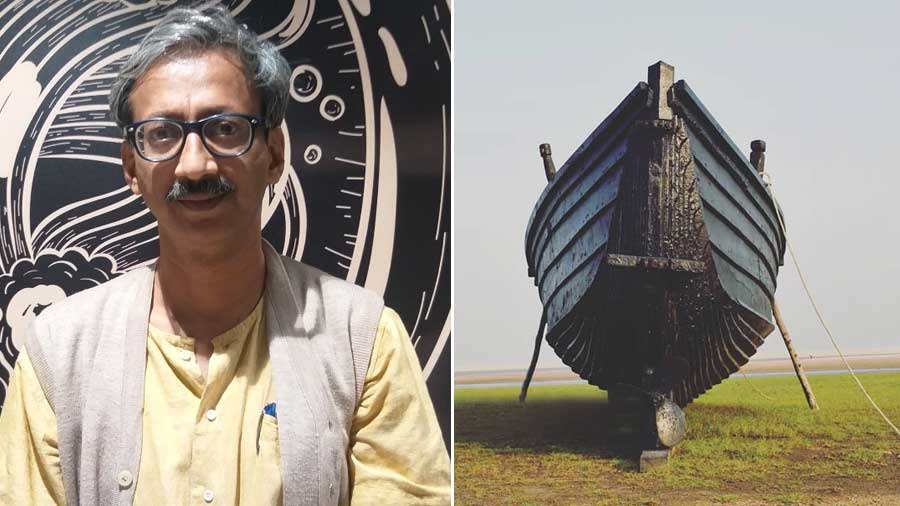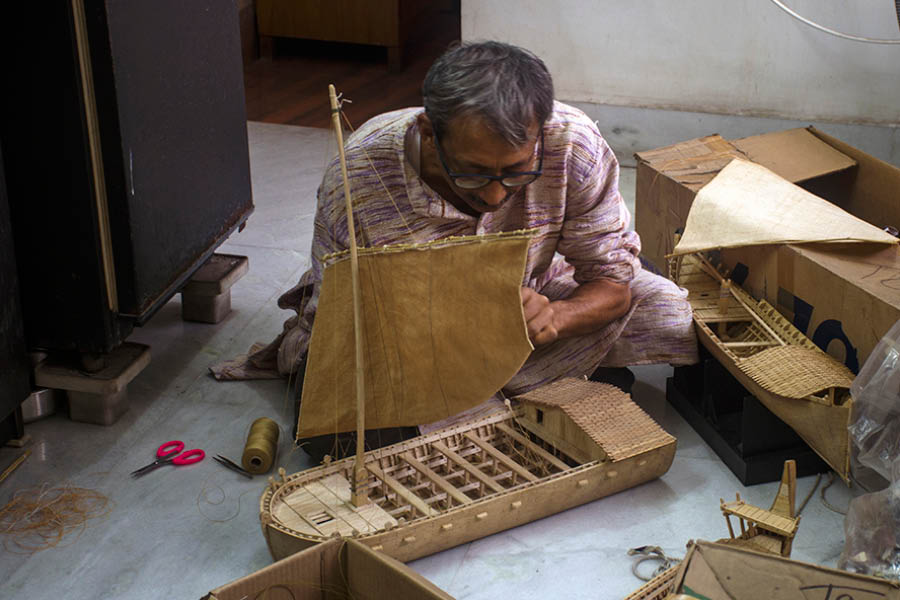A month in the making, followed by nearly 20 months of wait, the chhot — an indigenous boat from the south of West Bengal recreated by a research team — is finally headed for its final destination and home – the National Maritime Museum in Lothal, Gujarat.
When Swarup Bhattacharyya, consultant curator at Vidyasagar University and a long-time researcher on Bengal’s wooden boats, decided to recreate the chhot boat and document the entire process, the Endangered Material Knowledge Programme (EMKP) — a major grant-giving programme to support the documentation of material knowledge systems that are under threat and in danger of disappearing — stepped in to back him.
Bhattacharyya, who is popularly known as the boatman of Bengal, was joined by John P. Cooper of Exeter University and Zeeshan Alli Shaikh, an England-based researcher originally from Goa — both veterans in marine archaeology with experience in working on vanishing ships.

The mentors (left to right) John P. Cooper, Zeeshan Alli Shaikh and Swarup Bhattacharyya
The back story
Chhot boats were at one time extensively used in the southernmost regions of West Bengal for navigating the estuaries (or mohona, the confluence of the river and the sea). Used both for ferrying cargo and fishing, these boats were once the lifeline of people living in the coastal areas of south West Bengal. The boat, with its narrow V-shaped cross-section is ideal for navigating the choppy waters of the Hooghly, where it flows into the sea. These boats were also used to venture into the sea and could be considered as the only sea-faring boats of West Bengal.
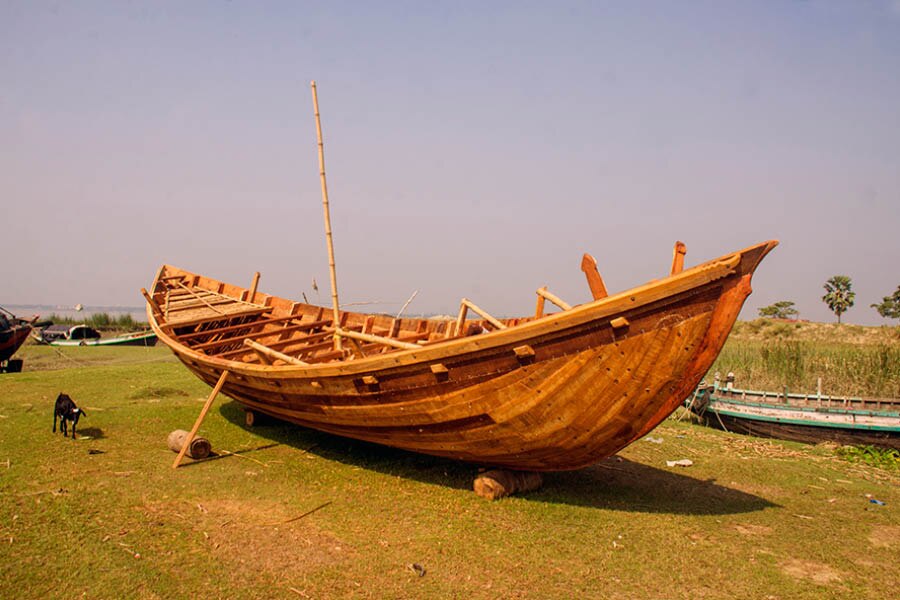
The completed chhot on November 10, 2022. The boat, with its narrow V-shaped cross-section is ideal for navigating the choppy waters of the Hooghly, where it flows into the sea
“Even 30 years ago, chhot was regularly made in the village of Dihimondalghat on the eastern coast of Rupnarayan,” Bhattacharyya said.
The V-shaped chhot boats can only ply in deep waters and were rendered useless as silting reduced the depth of rivers in south Bengal. Better roads and connectivity also reduced the dependency on river transport and boats like chhots slipped into oblivion.
The rebuilding
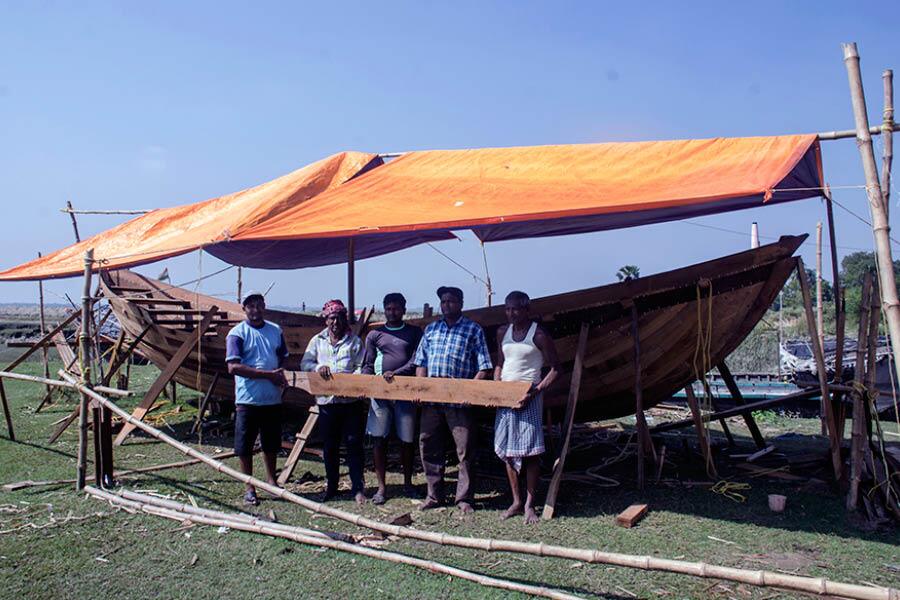
The boatmakers (left to right) Dilip, Amol, Dipak, Monimohan with their father Panchanan Mondal
Finding people to rebuild a that was last made three decades ago was no easy task. But Bhattacharyya, with his decades of field work, was able to spot Panchanan Mondal, a master boat maker who had worked on the construction of a chhot boat. He was accompanied by his four sons Dilip, Amol, Dipak and Monimohan — all of them competent boatmakers who had never laid their hands on a chhot. Originally from the eastern banks of Rupnarayan, the Mondals now make boats in the coastal areas of Bengal.
Dihimondal Ghat in Howrah district and the ancestral place of the Mondals were chosen as the venue for the reconstruction of the chhot. “We chose that place because it is just opposite Tamluk, the ancient port known as Tamralipta,” Bhattacharya said.
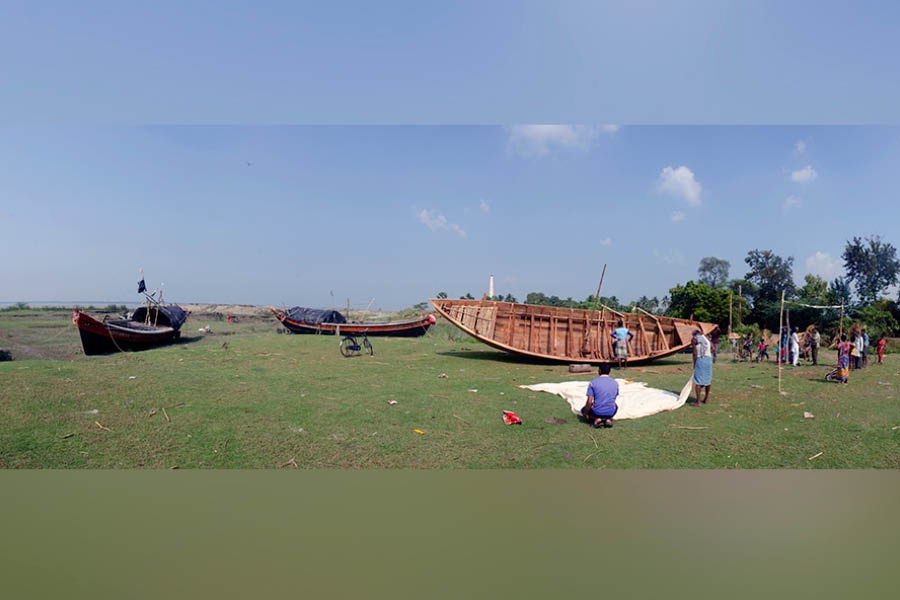
The chhot being made at Dihimondal Ghat
For over a month — from October to November 2022 — the otherwise quiet ghat overlooking the mighty Rupnarayan was a buzz of activities. The sound of hammer on wood filled the air as the Mondals toiled hard to build a boat lost in the tide of time.
The British Museum took up the initiative of archiving and digitising the entire project.
History remade
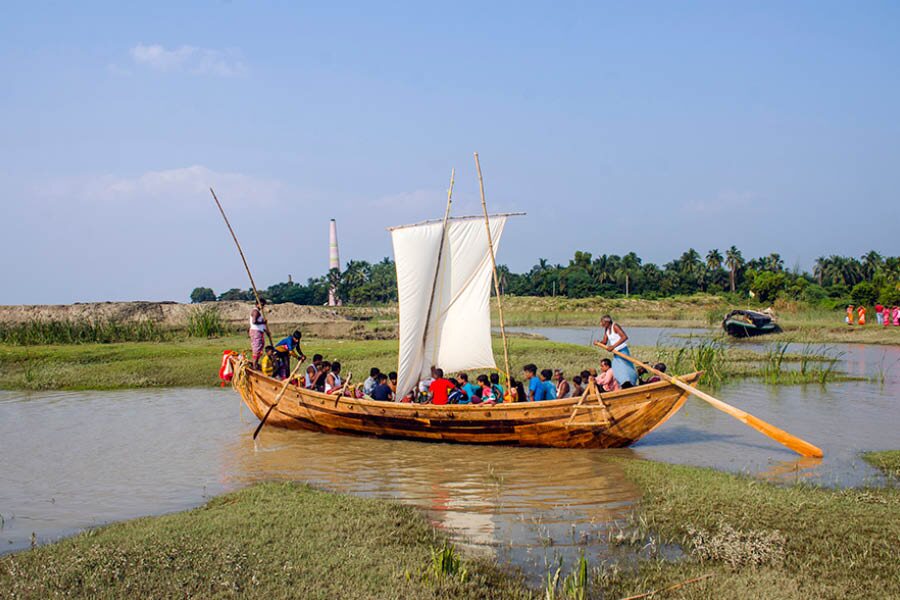
The completed chhot hits the water on Novemver 10, 2022
The boat was completed in early November and it was time to celebrate. Sadly, Cooper had to head home just before the completion because of family commitments. The chhot was complete with anchors, sail and all other accessories. A ritual, comprising a small puja of the boat, was performed before it hit the water. “This puja requires no priest and is usually performed by the boatmaker. The boat is considered a daughter and the boat maker its father. The daughter is offered in marriage by the father,” Bhattacharyya said.
Finally, it was time for the grand moment. Dihimondal Ghat had a small stretch of water connecting it to the river. A group of villagers pushed the boat into the narrow stretch of water. The oars were rowed and the sail lifted creating a grand spectacle with the endless water and blue sky in the backdrop. After the brief encounter with water, the chhot was pulled back into dry ground.
Vasant Shinde, former vice-chancellor of the Deccan College, arranged for the boat to be displayed at the upcoming National Maritime Museum, in Lothal, an ancient port city of Indus Valley Civilisation.
Long wait

On the day of the final adieu — July 25, 2024 — (clockwise from top left) the chhot; rituals being performed on the boat, the chhot being pushed to the water; and the chhot hitting the water for the last time
The days and months to follow did not augur well for the chhot. The museum was yet to open and the authorities debated how to transport the boat even as the chhot, lying under the open sky, started to decay. “The boat was not meant for operating in the water, rather it was a museum piece and keeping it in the open will not only destroy the boat, but the entire project,” Bhattacharyya said.
Finally, after 20 months, things took a positive turn with the Kolkata Port Trust taking the responsibility of transferring the boat all the way across the country. On July 25, the chhot was all set for its final adieu. The Mondal brothers were away but the senior Mondal was present at the farewell ceremony. The rituals that are performed on completion of boatmaking, were once again performed before the boat was pushed into the waters of the canal leading to Rupnarayan river. A Kolkata Port Trust towing boat was docked in the canal, ready to tug the chhot towards Kolaghat. From there, the chhot will be transferred to Kolkata docks by road and then onwards to Lothal in Gujarat.
